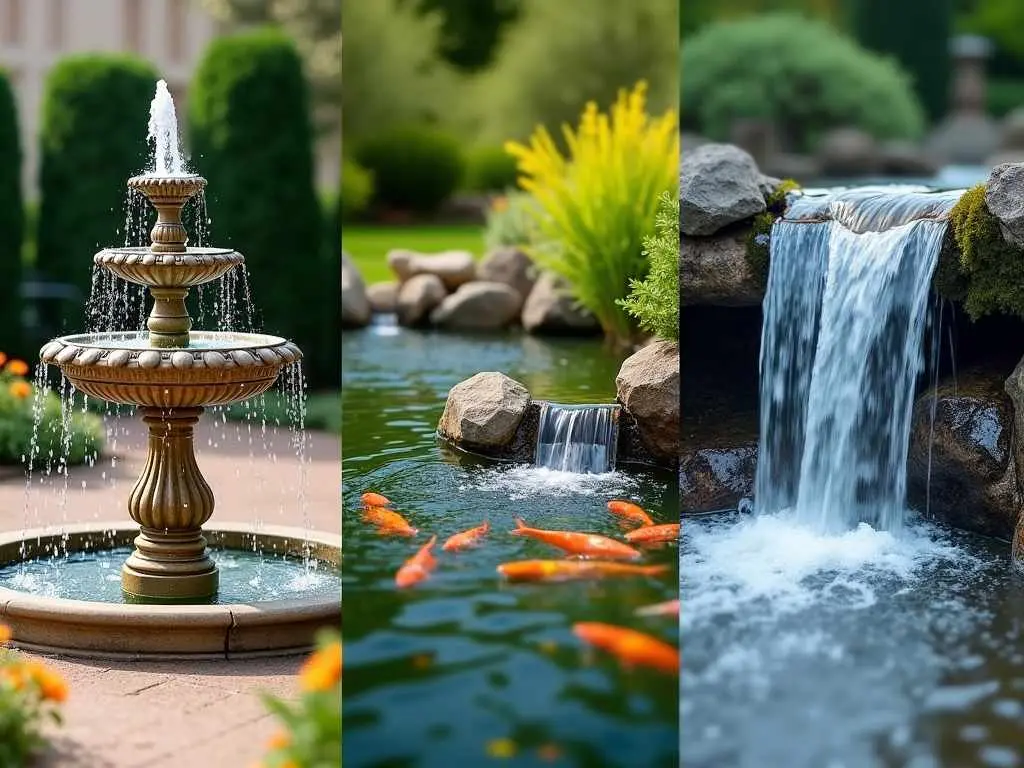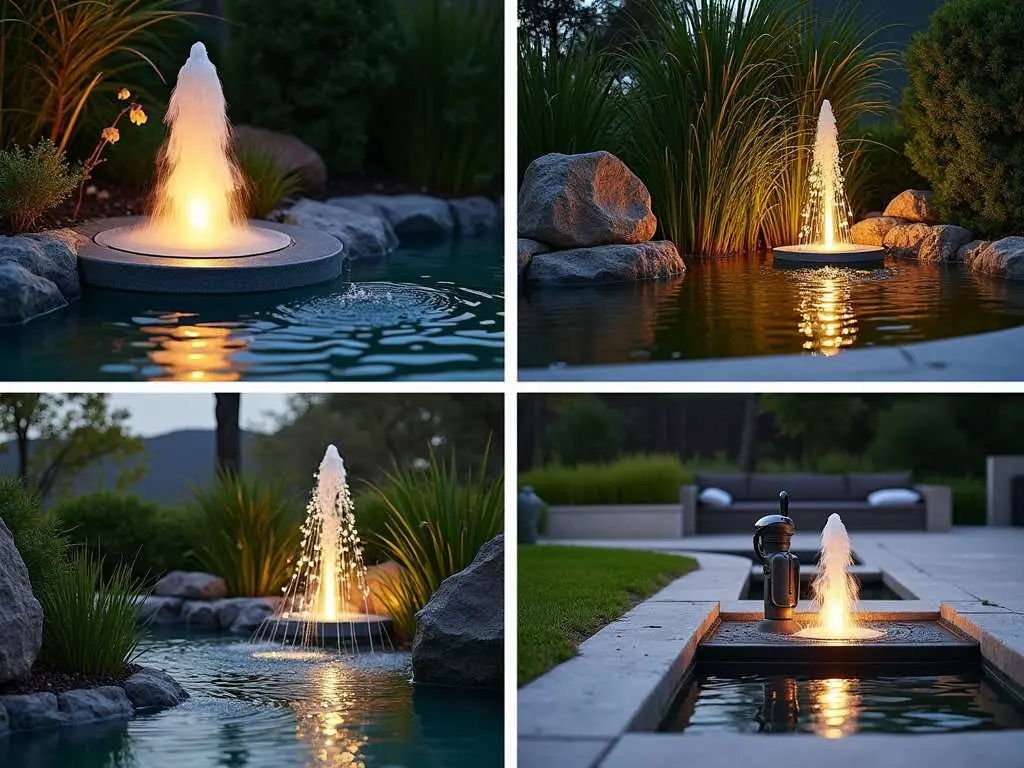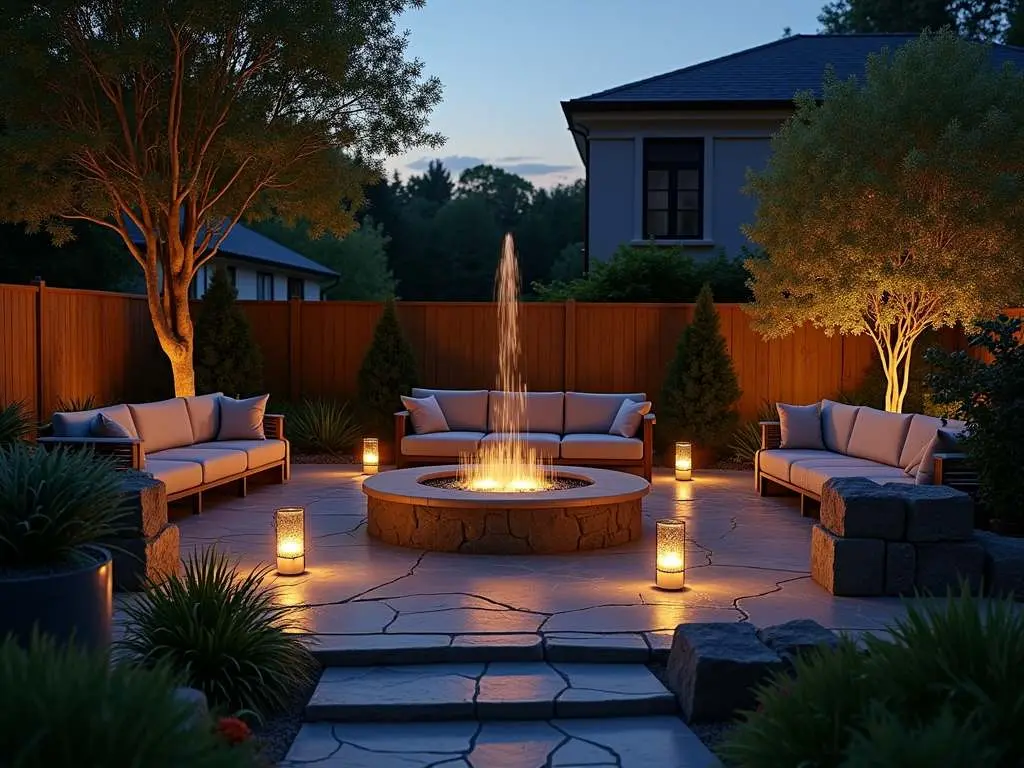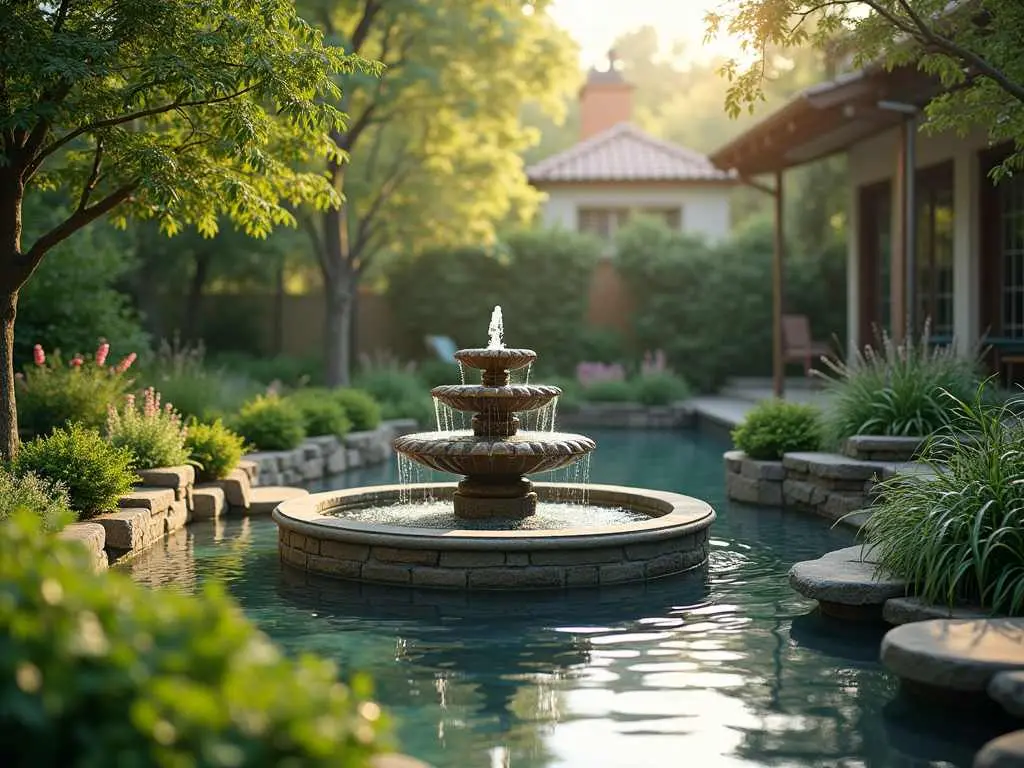As a landscape architect with over 15 years of experience designing outdoor spaces, I’ve seen firsthand how water features can transform a yard into a tranquil oasis. At Curvspace, we believe that incorporating soothing elements like fountains and ponds can significantly enhance your outdoor living experience. In this article, I’ll share expert insights on creating relaxing yard water features that will bring peace and beauty to your home.
Jump to:
The Benefits of Yard Water Features
Adding a water feature to your yard offers numerous benefits beyond just aesthetic appeal. Research has shown that the sight and sound of water can have a positive impact on mental health and well-being.
Stress Reduction
One of the primary benefits of yard water features is their ability to reduce stress and promote relaxation. The gentle sound of flowing water has been shown to lower cortisol levels, the hormone associated with stress.
Improved Air Quality
Water features can also improve the air quality in your yard. As water evaporates, it releases negative ions into the air, which can help remove pollutants and allergens.
Increased Property Value
A well-designed water feature can significantly increase your property’s value. According to the National Association of Realtors, outdoor water features can boost home value by up to 20%.
Types of Relaxing Yard Water Features

Now that we understand the benefits, let’s explore some popular types of relaxing yard water features you’ll love.
1. Fountains
Fountains are versatile and can be incorporated into almost any yard size. They come in various styles, from classic tiered designs to modern sculptural pieces.
Wall Fountains
Wall fountains are perfect for smaller spaces or as a focal point in a courtyard. The vertical design saves space while still providing the soothing sound of trickling water.
Freestanding Fountains
Freestanding fountains can be placed anywhere in your yard and come in a wide range of sizes and styles. They’re an excellent option for creating a central focal point in your garden.
2. Ponds
Ponds create a natural, serene atmosphere and can support aquatic life, adding another dimension to your yard’s ecosystem.
Koi Ponds
Koi ponds are not only beautiful but also provide a meditative experience as you watch the colorful fish swim. However, they require more maintenance than other water features.
Natural Swimming Ponds
For a more immersive experience, consider a natural swimming pond. These eco-friendly alternatives to traditional pools use plants to filter the water naturally.
3. Waterfalls
Waterfalls create a dramatic visual and auditory experience in your yard. They can be designed to fit any space, from small cascades to large, multi-tiered falls.
Pondless Waterfalls
Pondless waterfalls are a low-maintenance option that recirculates water without the need for a visible pond. They’re ideal for smaller yards or areas where safety is a concern.
Designing Your Relaxing Yard Water Feature

When designing your water feature, consider the following factors to ensure it complements your yard and provides maximum relaxation.
1. Scale and Proportion
Your water feature should be proportionate to your yard size. A small fountain might get lost in a large backyard, while an oversized waterfall could overwhelm a tiny space.
2. Style Consistency
Ensure your water feature aligns with your home’s architectural style and existing landscaping. A modern, minimalist fountain might look out of place in a cottage-style garden.
3. Sound Considerations
The sound of water can be soothing, but it’s important to consider the volume. A large waterfall might be too noisy for a small yard, while a gentle trickle might not be audible in a larger space.
4. Lighting
Incorporating lighting into your water feature allows you to enjoy it day and night. LED lights can create a magical atmosphere and highlight the water’s movement.
5. Plant Integration
Integrating plants around your water feature can create a more natural, lush environment. Consider aquatic plants for ponds or moisture-loving plants around fountains and waterfalls.
Maintenance Tips for Yard Water Features
To keep your water feature looking and functioning its best, regular maintenance is essential.
- Clean regularly: Remove debris and clean filters to prevent clogging.
- Monitor water levels: Especially in hot weather, water can evaporate quickly.
- Check for leaks: Address any leaks promptly to prevent water waste and damage.
- Winterize: In colder climates, take steps to protect your water feature from freezing.
- Balance water chemistry: For ponds, maintain proper pH and chemical levels to support aquatic life.
Eco-Friendly Considerations

When designing your yard water feature, consider eco-friendly options to minimize environmental impact and reduce water usage.
1. Recirculating Systems
Use pumps that recirculate water to minimize waste. This not only conserves water but also reduces your utility bills.
2. Native Plants
Incorporate native aquatic plants in and around your water feature. They require less maintenance and support local ecosystems.
3. Solar-Powered Pumps
Consider using solar-powered pumps to reduce energy consumption. They’re especially useful for features not near a power source.
4. Rainwater Collection
Design your water feature to collect and use rainwater. This can significantly reduce your water usage and provide a sustainable water source.
People Also Ask
Q: How much does it cost to install a yard water feature?
A: The cost of installing a yard water feature can vary widely depending on the type, size, and complexity. A small, pre-made fountain might cost a few hundred dollars, while a large custom pond or waterfall could cost tens of thousands. On average, homeowners spend between $2,000 and $4,000 on water feature installation.
Q: Are yard water features difficult to maintain?
A: The level of maintenance required depends on the type of water feature. Simple fountains generally require minimal upkeep, while ponds with fish and plants need more regular attention. However, with proper design and installation, most water features can be maintained with just a few hours of work per month.
Q: Can I install a water feature in a small yard?
A: Absolutely! There are water features suitable for yards of all sizes. Wall fountains, small container ponds, and pondless waterfalls are excellent options for smaller spaces. The key is to choose a feature that’s proportionate to your yard size and complements your existing landscape.
Conclusion
Incorporating a relaxing yard water feature can transform your outdoor space into a serene retreat. From stress reduction to increased property value, the benefits are numerous. By carefully considering your space, style, and maintenance capabilities, you can create a water feature that brings joy and tranquility to your home for years to come.
References
1 Ulrich, R. S., Simons, R. F., Losito, B. D., Fiorito, E., Miles, M. A., & Zelson, M. (1991). Stress recovery during exposure to natural and urban environments. Journal of Environmental Psychology, 11(3), 201-230.
2 Alvarsson, J. J., Wiens, S., & Nilsson, M. E. (2010). Stress recovery during exposure to nature sound and environmental noise. International Journal of Environmental Research and Public Health, 7(3), 1036-1046.
3 Nakane, H., Asami, O., Yamada, Y., & Ohira, H. (2002). Effect of negative air ions on computer operation, anxiety and salivary chromogranin A-like immunoreactivity. International Journal of Psychophysiology, 46(1), 85-89.
4 National Association of Realtors. (2018). Remodeling Impact Report: Outdoor Features.
Disclosure
Our content is reader-supported. This means if you click on some of our links, then we may earn a commission. Commissions do not affect our editor’s opinions or evaluations. Learn more about our editorial process.

About the Editorial Staff
The Curvspace editorial team comprises a diverse group of experts on intermediate and threshold spaces in homes and workplaces. Architects and interior designers, civil engineers and artists, environmental and behavioral psychologists, sociologists and anthropologists. All collaborate to create helpful content, that explores the full potential of these often-overlooked areas to enhance our daily lives.


